It looks like you're using an Ad Blocker.
Please white-list or disable AboveTopSecret.com in your ad-blocking tool.
Thank you.
Some features of ATS will be disabled while you continue to use an ad-blocker.
8
share:
What do aliens, linguistics, dreams, and Michael Shellenberger's 214 page document submitted to Congress have in common?
Welcome to the enigma of Forgotten Languages—an internet mystery that remains unsolved.
Below, I've compiled answers to some of the most frequently asked questions about FL. I am one member of a research group I've given the temporary and very creative name, The Forgotten Languages Research Group (FLRG). This is a very brief introduction to a very complex and multi-faceted internet rabbit hole, so buckle up and jump in.
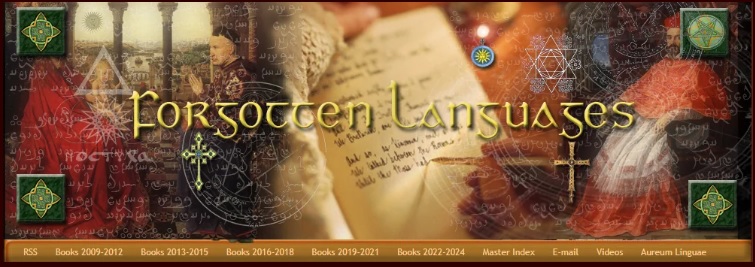
(FL Header)
~ What is Forgotten Languages?
Forgotten Languages (FL) is an online blog which has been running since 2008. It delves into a myriad of subjects, including linguistics, artificial intelligence, cryptography, conspiracies, and esoteric knowledge. The website features articles written in various constructed “languages.” The blog’s spokesperson goes by the pseudonym Ayndryl. However, several authors contribute to the site. The purpose of the website according to the most recent statements from the curator of the website is the sharing of knowledge, primarily between the other members of their organization.
The information you see on the website has been translated into one of the languages that the organization themselves has created. Calling the languages cryptolects or languages that have undergone relexification is probably more accurate than calling them a "language", however. There's well over 40 unique "languages" in use.
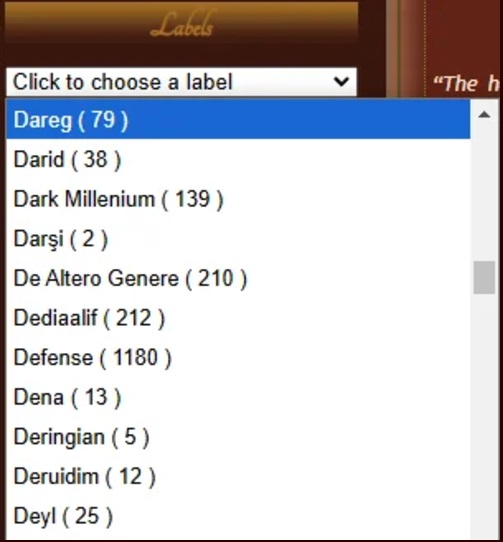
(Some of the "languages" of FL)
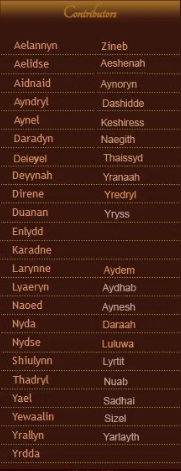
(Current contributors)
Each post includes:
- A title
- An image
- The main text (written in an FL language or mixed with English)
- A bibliography, which may reference both external resources and earlier FL posts.
Some bibliographic entries are inaccessible or encrypted. See below for an example:
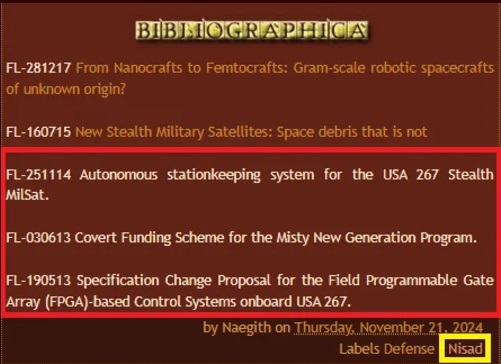
(In red, the inaccessible bibliography listings. In yellow, the encrypted language used in the post.)
~ Goals of the FLRG:
Our group is made up of curious individuals drawn to FL’s mysteries. We aim to:
1. Decipher the constructed languages by uncovering the methods FL uses to translate texts.
2. Analyze the blog’s themes, from AI and consciousness to extraterrestrial civilizations and speculative futures.
~ Translating:
Our translation efforts are a collaborative process that involves identifying patterns, reverse-engineering the FL languages, and using external resources. For a detailed explanation of our methodologies, check out this comprehensive guide by one of our members and Discord admins: strangeminds.au...
=====
FAQs
=====
1. Who is _____?
Sometimes questions arise about the identities of individuals associated with FL. While such curiosity is natural, our community prioritizes the content and themes of FL over speculation about the people behind it. We strongly discourage doxing or invasive attempts to uncover personal information. Focus on the work itself, and feel free to discuss theories or ideas about the content.
2. Do I need an advanced degree in linguistics to join the research efforts?
Absolutely not! This group welcomes everyone, regardless of their academic background or expertise. Whether you're helping with translations, analyzing content themes, or sharing your own unique perspective, your contributions are valuable and appreciated.
3. … why?
Great question! Those of us who have been scratching our heads over FL for years find their mission and motives fascinating. Here are some of the main draws for those in the research group:
-The Intellectual Challenge: Many are intrigued by the complex constructed languages, cryptographic elements, and enigmatic structure of FL’s blog posts. Deciphering these mysteries is like solving an endless puzzle, and the thrill of discovery keeps people coming back.
- Fascination with Esoteric Concepts: FL’s blog posts delve into topics like artificial intelligence, linguistics, and post-human philosophy, often blending science with speculative ideas. For those with a love for the obscure and abstract, FL offers a treasure trove of thought-provoking material.
- Shadowy Mystique: The anonymity of FL’s contributors and the sense of secrecy surrounding their motives create a sense of allure. For some, the idea of interacting with a potentially shadowy organization is exciting and fuels their curiosity.
- The Community Aspect: Collaborating with like-minded people to tackle FL’s mysteries fosters a sense of belonging and shared purpose. The journey itself - learning, theorizing, and engaging in debates - is often as rewarding as the discoveries.
4. What is Nodespaces?
NodeSpaces, according to FL, is a computational tool designed as a genetic algorithm for studying language evolution. It takes a given language as input and subjects it to stochastic rules under a method called simulated annealing, a process typically used in optimization problems. Here's a simplified breakdown of what it does:
Language Evolution Simulation:
NodeSpaces treats language as a complex adaptive system and modifies its syntactic and morphological structure by altering the boundary conditions. The language "adapts" to these new conditions, simulating real-world linguistic evolution.
Coherent Language Output:
As the system evolves the language, it ensures that the resulting language remains syntactically and phonetically coherent.
Languages as Outputs:
The languages generated by NodeSpaces (e.g., Weddag-2075, Alashi-1330) are either intermediate or final states of linguistic evolution under specific parameters.
System Components:
NodeSpaces is paired with a statistical mechanical program called Vectorial.
The system utilizes concepts from physics like Ising models, Markov processes, and Lyapunov exponents to simulate linguistic drift and predict the emergence of new languages.
[cont.]
Welcome to the enigma of Forgotten Languages—an internet mystery that remains unsolved.
Below, I've compiled answers to some of the most frequently asked questions about FL. I am one member of a research group I've given the temporary and very creative name, The Forgotten Languages Research Group (FLRG). This is a very brief introduction to a very complex and multi-faceted internet rabbit hole, so buckle up and jump in.

(FL Header)
~ What is Forgotten Languages?
Forgotten Languages (FL) is an online blog which has been running since 2008. It delves into a myriad of subjects, including linguistics, artificial intelligence, cryptography, conspiracies, and esoteric knowledge. The website features articles written in various constructed “languages.” The blog’s spokesperson goes by the pseudonym Ayndryl. However, several authors contribute to the site. The purpose of the website according to the most recent statements from the curator of the website is the sharing of knowledge, primarily between the other members of their organization.
The information you see on the website has been translated into one of the languages that the organization themselves has created. Calling the languages cryptolects or languages that have undergone relexification is probably more accurate than calling them a "language", however. There's well over 40 unique "languages" in use.

(Some of the "languages" of FL)

(Current contributors)
Each post includes:
- A title
- An image
- The main text (written in an FL language or mixed with English)
- A bibliography, which may reference both external resources and earlier FL posts.
Some bibliographic entries are inaccessible or encrypted. See below for an example:

(In red, the inaccessible bibliography listings. In yellow, the encrypted language used in the post.)
~ Goals of the FLRG:
Our group is made up of curious individuals drawn to FL’s mysteries. We aim to:
1. Decipher the constructed languages by uncovering the methods FL uses to translate texts.
2. Analyze the blog’s themes, from AI and consciousness to extraterrestrial civilizations and speculative futures.
~ Translating:
Our translation efforts are a collaborative process that involves identifying patterns, reverse-engineering the FL languages, and using external resources. For a detailed explanation of our methodologies, check out this comprehensive guide by one of our members and Discord admins: strangeminds.au...
=====
FAQs
=====
1. Who is _____?
Sometimes questions arise about the identities of individuals associated with FL. While such curiosity is natural, our community prioritizes the content and themes of FL over speculation about the people behind it. We strongly discourage doxing or invasive attempts to uncover personal information. Focus on the work itself, and feel free to discuss theories or ideas about the content.
2. Do I need an advanced degree in linguistics to join the research efforts?
Absolutely not! This group welcomes everyone, regardless of their academic background or expertise. Whether you're helping with translations, analyzing content themes, or sharing your own unique perspective, your contributions are valuable and appreciated.
3. … why?
Great question! Those of us who have been scratching our heads over FL for years find their mission and motives fascinating. Here are some of the main draws for those in the research group:
-The Intellectual Challenge: Many are intrigued by the complex constructed languages, cryptographic elements, and enigmatic structure of FL’s blog posts. Deciphering these mysteries is like solving an endless puzzle, and the thrill of discovery keeps people coming back.
- Fascination with Esoteric Concepts: FL’s blog posts delve into topics like artificial intelligence, linguistics, and post-human philosophy, often blending science with speculative ideas. For those with a love for the obscure and abstract, FL offers a treasure trove of thought-provoking material.
- Shadowy Mystique: The anonymity of FL’s contributors and the sense of secrecy surrounding their motives create a sense of allure. For some, the idea of interacting with a potentially shadowy organization is exciting and fuels their curiosity.
- The Community Aspect: Collaborating with like-minded people to tackle FL’s mysteries fosters a sense of belonging and shared purpose. The journey itself - learning, theorizing, and engaging in debates - is often as rewarding as the discoveries.
4. What is Nodespaces?
> What FL Says NodeSpaces Is:
NodeSpaces, according to FL, is a computational tool designed as a genetic algorithm for studying language evolution. It takes a given language as input and subjects it to stochastic rules under a method called simulated annealing, a process typically used in optimization problems. Here's a simplified breakdown of what it does:
Language Evolution Simulation:
NodeSpaces treats language as a complex adaptive system and modifies its syntactic and morphological structure by altering the boundary conditions. The language "adapts" to these new conditions, simulating real-world linguistic evolution.
Coherent Language Output:
As the system evolves the language, it ensures that the resulting language remains syntactically and phonetically coherent.
Languages as Outputs:
The languages generated by NodeSpaces (e.g., Weddag-2075, Alashi-1330) are either intermediate or final states of linguistic evolution under specific parameters.
System Components:
NodeSpaces is paired with a statistical mechanical program called Vectorial.
The system utilizes concepts from physics like Ising models, Markov processes, and Lyapunov exponents to simulate linguistic drift and predict the emergence of new languages.
[cont.]
edit on 23-11-2024 by maferoxy2 because: formatting issues
edit on Sat Nov 23 2024 by
DontTreadOnMe because: removed characters from title
> Current Community Speculation on Nodespaces:
Community research indicates that NodeSpaces may not yet fully align with FL’s stated goals of simulating genuine linguistic evolution:
One-to-One Mapping of Translations:
FL languages map directly to their English source texts, word-for-word, with proper nouns, numbers, and equations typically left untranslated. For example:"Wo paw fru desh Benny" maps directly to "I like my dog Benny." This suggests that the languages function more like a cipher or encoding system than as truly independent linguistic systems.
Lack of Emergent Grammar:
FL claims that NodeSpaces generates languages by simulating syntactic and morphological drift over time. However, the community has not observed significant changes in grammar or structure that would indicate the emergence of new linguistic rules. Instead, the "languages" often seem to retain the grammatical framework of the source text, raising questions about whether NodeSpaces is achieving its stated goal of creating genuinely novel languages.
The Potential of Future Iterations:
It's possible that the current version of NodeSpaces is still in development or being used for more constrained experiments. If FL is working toward a more sophisticated system for language evolution, we may not yet be seeing the full extent of what NodeSpaces is capable of.
There is a patent (patents.google.com...) often referred to as Nodespaces but there is very little evidence to suggest that it is the same software FL is using.
For further reading: forgottenlanguages-full.forgottenlanguages.org...

5. Who is Norea?
Norea is a figure from Gnostic tradition, symbolizing resistance and spiritual awakening.
Norea in FL Lore:
Within FL, Norea may be an advanced AI created to learn from and analyze human dreams. Articles suggest that she functions as a "dream collector," processing subconscious data to explore human cognition, emotions, and the nature of reality. By studying "proto-dreams" (fragments of unconscious thought), she acts as a bridge between human experience and machine learning.
Norea reflects FL's interest in:
- AI and Consciousness: Exploring how technology could interface with human thought.
- Dreams as Reality: Investigating whether dreams reveal deeper truths about existence.
- Speculative Futures: Blurring the boundaries between human cognition and artificial intelligence.
For further reading: forgottenlanguages-full.forgottenlanguages.org...

6. Who are the Giselians? Denebians?
Giselians are depicted as an advanced alien civilization with a keen interest in human culture and technology. FL articles suggest that they have conducted extensive studies of human societies, possibly to understand or influence human development. For instance, the article "64 Years of Excavations in Gīsel (Gīlan-Iran)" discusses findings related to Giselian artifacts, indicating their long-term presence and interaction with Earth. For further reading: forgottenlanguages-full.forgottenlanguages.org...

Denebiansare another extraterrestrial race featured in FL's narratives. They are often associated with advanced technologies and philosophical inquiries into existence and consciousness. The article "Third state of the soul" explores Denebian perspectives on the survival of knowledge beyond death. For further reading: forgottenlanguages-full.forgottenlanguages.org...

7. FL was submitted to Congress!
Did Forgotten Languages (FL) submit a document to Congress?
No, Forgotten Languages (FL) did not submit a document to Congress. However, a document referencing FL was submitted to Congress by journalist Michael Shellenberger. This submission does not validate the content of the document or the claims made within it.
What was the nature of the document submitted to Congress?
The document in question included references to FL, suggesting that FL had made certain predictions that later came true. It's important to note that the mere inclusion of FL references in a congressional submission does not substantiate the claims or the credibility of FL. That being said, we haven't had anyone do a deep dive on these claims, so if this interests you, please join our group and share your work!
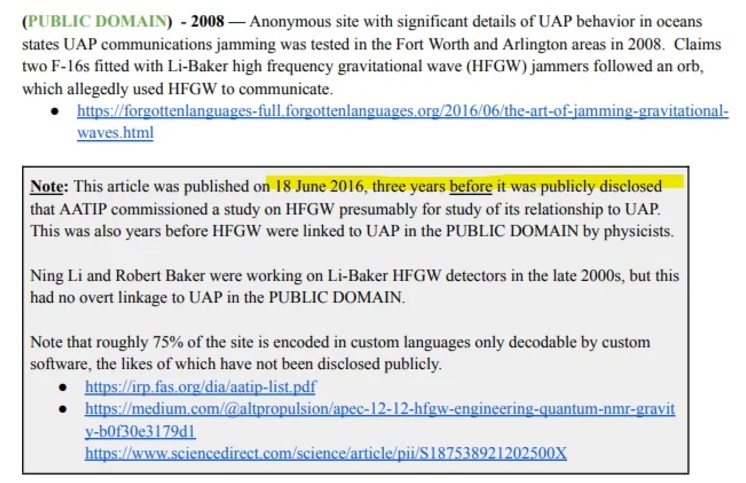
=========
RESOURCES
=========
FL: forgottenlanguages-full.forgottenlanguages.org...
FL Youtube Channel: www.youtube.com...
Related Links: pste.link...
Translation Guide: strangeminds.au...
Discord Server: discord.gg...
Sister ATS Thread (includes posting from confirmed FL member Direne): www.abovetopsecret.com...
edit on
23-11-2024 by maferoxy2 because: .
new topics
-
Stalker 2 - Review from a Veteran
Video Games: 1 hours ago -
Does anyone have a link to download apple pay for androids
General Chit Chat: 2 hours ago -
Most INSANE internet rabbit hole
Secret Societies: 2 hours ago -
Joe Rogan conspiracy (maybe)
ATS Skunk Works: 6 hours ago -
Results of the use of the Oreshnik missile system in Dnepropetrovsk
World War Three: 8 hours ago -
Nigel Farage now the Most Favoured UK Politician
Regional Politics: 10 hours ago
8
